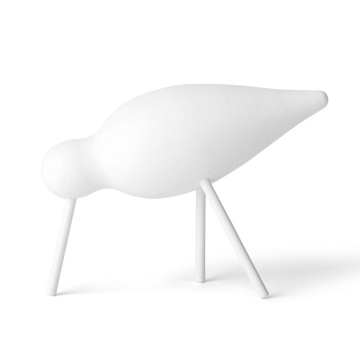From Broth to Bliss: The Ultimate Udon Experience
The Rich History of Udon Noodles
Udon noodles have a storied origin that traces back to ancient Japan, where they were first introduced during the Heian period (794-1185). While the precise genesis of these thick wheat noodles is still debated, it is widely believed that udon is influenced by the Chinese wheat noodles, which were brought to Japan by travelers and traders. As with many culinary traditions, udon underwent significant transformation over the centuries, adapting to local ingredients and customs.
Throughout history, udon has not only been a staple food but also an integral part of cultural rituals and social gatherings. In the Kanagawa region, for instance, a unique form of udon known as “Sanuki udon” gained prominence. It is characterized by its firm texture and is often served in a simple broth. The evolution of udon reflects the broader changes within Japanese cuisine, as it has been incorporated into regional specialties, with variations emerging to suit local tastes and palates.
The methods of preparation have also evolved, transitioning from rustic hand-pulling techniques to more refined processes used in modern culinary practices. Traditional udon-making involves kneading the dough, letting it rest, and then rolling and cutting it to achieve the desired thickness. This craftsmanship contributes to udon’s signature chewy texture. Despite the modern conveniences of machinery, many artisans still adhere to these time-honored practices, showcasing their dedication to maintaining quality and flavor.
Moreover, udon's significance in Japanese culture extends beyond its culinary applications. It is often associated with comfort food and is prepared during celebrations, such as New Year’s and birthdays, symbolizing prosperity and longevity. Throughout its rich history, udon has transcended its humble beginnings to become a beloved dish enjoyed not only in Japan but also in various parts of the world, illustrating its enduring legacy and adaptability in a global context.
Crafting the Perfect Udon Broth
Creating authentic udon broth is an art that hinges upon the careful selection of foundational ingredients and the precision in balancing flavors. At the heart of a great udon broth is dashi, a Japanese stock that serves as the cornerstone of many traditional dishes. Dashi can be made from various sources, including kombu (dried kelp), bonito flakes, or shiitake mushrooms, each contributing to a distinct umami flavor profile. The use of quality ingredients is crucial, as they impact the overall taste, ensuring a rich and savory culinary experience.
To prepare the broth, start by combining the dashi with soy sauce, mirin, and a touch of salt. Soy sauce imparts a depth of flavor while mirin adds a slight sweetness that rounds out the salty notes. The key to achieving the perfect udon broth lies in the balance of these components. Adjusting the ratios allows for customization according to regional influences or personal preferences. For example, some may prefer a lighter, more delicate broth with a predominance of dashi, while others might lean towards a heartier flavor enhanced with additional soy sauce.
Another important aspect is the optional incorporation of other ingredients, such as sake or miso, which can elevate the taste further. Sake adds depth, while miso can contribute complexity and a creamy texture to the broth. One should also consider the extraction time; a longer simmering period allows the flavors to meld more profoundly. However, be mindful of over-extraction, which can lead to bitterness. As with many culinary endeavors, experimentation is encouraged, allowing for the evolution of a broth that meets one’s unique taste preferences. Each bowl of udon soup tells a story, and the broth is undoubtedly the heart of that narrative.
Udon Noodle Varieties and Pairings
Udon noodles, a quintessential element of Japanese cuisine, come in various types, each with distinct textures and flavors that cater to an array of culinary preferences. The most common udon variety is the thick, chewy wheat noodle, which has a smooth surface and a light, neutral flavor. This classic udon is often used as a base for soups, stir-fries, and salads, making it a versatile choice.
Another popular type is the thin udon, which resembles somen noodles and is lighter, perfect for dishes that require a more delicate touch. For those seeking a unique twist, yaki udon—stir-fried udon—offers a slightly crispy texture, adding complexity to any meal. Additionally, there are flavored udon options, like curry udon or spinach udon, which infuse additional taste and color into the dish. Choosing the right udon noodle hinges on the dish's overall profile; thicker noodles are typically paired with hearty broths, while lighter options complement lighter sauces or stir-fries.
When it comes to toppings and pairings, udon is remarkably adaptable. Tempura, which includes battered and fried vegetables or shrimp, adds a delectable crunch that contrasts beautifully with the chewy noodles. For a more nutritious option, pairing udon with an assortment of fresh vegetables—such as bok choy, carrots, or mushrooms—can enhance the dish's flavor while incorporating essential nutrients. Furthermore, meats like tender beef or chicken can elevate the experience, imparting richness that binds perfectly with the udon’s base. Whether one opts for a comforting bowl of udon soup or a vibrant stir-fry, the right noodle variety and thoughtful pairings can create a truly satisfying meal, highlighting the culinary magic of udon.
Experiencing Udon: Recipes and Serving Suggestions
To truly embrace the ultimate udon culinary experience, it is essential to explore a variety of recipes that highlight the versatility of this beloved noodle. Udon, characterized by its thick and chewy texture, serves as the perfect base for a multitude of dishes, ranging from comforting soups to stir-fried delicacies. One traditional recipe is the classic Udon Noodle Soup, where the noodles are simmered in a rich dashi broth, flavored with soy sauce and mirin. Topped with green onions, tempura, or a soft-boiled egg, this dish can transport you to a cozy kitchen in Japan.
For a contemporary spin, consider making Stir-Fried Udon. This dish typically features udon cooked with an assortment of colorful vegetables, such as bell peppers and bok choy, along with protein options, like chicken, shrimp, or tofu. Toss everything in a savory sauce made from soy sauce and sesame oil to create an enticing stir-fry that is both filling and flavorful. Serving this udon dish with a sprinkle of sesame seeds and slivers of nori can elevate the overall presentation.
Garnishing and serving plays a crucial role in the udon dining culinary experience. A simple yet effective garnish is a drizzle of chili oil or a sprinkle of shichimi togarashi for added heat and flavor. For a refreshing touch, consider adding freshly grated ginger or sliced scallions. In addition, don’t forget to serve your udon with side dishes, such as pickled vegetables or a light salad, to balance the meal. For those looking to recreate an authentic experience at home, sourcing high-quality, fresh udon noodles and utilizing traditional ingredients will enhance the overall dining culinary experience, allowing the flavors to shine through.





